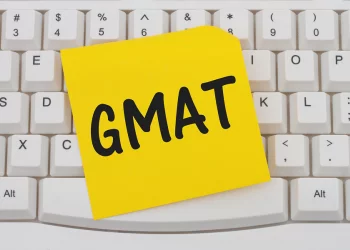
On 4 October, you had the opportunity to learn tips and tricks about time management for the GMAT Quantitative section directly from Mr Amit Goyal, Academic Head: Maths at Jamboree Education. During PrepAdviser's free webinar, he provided practical advice on how to build on the skill of reasoning to save time and improve accuracy.
GMAT structure and sections
As of September 2019, the GMAT takes less than three-and-a-half hours to complete. To some this may seem like too little time for all the thinking and writing during the exam. Others might find it hard to maintain their focus for hours on end. Either way, the tight structure and time limit of the GMAT require sufficient preparation beforehand. If they want to perform at their best, test takers need to master the specific format of all four sections of the exam. While the sections are the same for everyone, their order can be personalized in line with your strengths and preferences.
Check out: Test Prep Strategies that Suit Your Personality
For example, if the quantitative part is the most difficult one for you and you prefer to deal with it while you are still fresh at the start of the exam, you can opt for the following sequence: Quantitative, Verbal, Integrated Reasoning, Analytical Writing Assessment. However, test takers who have a different strategy in mind can also choose between two other options. Here are the three options available to candidates when choosing their section order:
- Quantitative, Verbal, Integrated Reasoning, Analytical Writing Assessment
- Analytical Writing Assessment, Integrated Reasoning, Quantitative, Verbal
- Verbal, Quantitative, Integrated Reasoning, Analytical Writing Assessment
Here is what the official GMAT website explains about this feature of the exam:
The Select Section Order screen will be presented on the computer after you select the schools to send your score report, after the navigation tutorial, and immediately prior to beginning your GMAT exam. You will have three section order options and two minutes to make a selection. If you do not make a selection within two minutes, the first order will be selected as a default.
Regardless of the order you choose, every section is composed of a specific number of questions and has to be completed within a set time period. The Analytical Writing Assessment consists of just one task to be completed in 30 minutes. Integrated Reasoning will also take you a maximum of 30 minutes to complete its 12 questions. Quantitative Reasoning and Verbal Reasoning are the longest sections – 31 questions for 62 minutes and 36 questions for 65 minutes respectively. You will also have two optional breaks between sections.
Computer-adaptive format
Most prospective GMAT test takers know that this exam is only available in a computer format. It does not require over-the-top digital mastery but you can expect several features which would not be accessible on a pen-and-paper test. For example, there is a timer at the top righthand corner of the computer screen which counts down the remaining time for each section – a small perk that will help candidates in their time management.
Check out: Highlights from the 2019 GMAT Test Prep Summit
Furthermore, according to Laura Dorwart, editor for PrepScholarGMAT, test takers need to confirm the submission of every answer before moving on to the next question. This will guarantee that a random click will not compromise your performance.
When you’re satisfied with an answer, you’ll click ‘Next’ at the bottom righthand corner of your screen. A screen popup will ask if you are OK with your answer; you’ll click ‘yes’ or ‘no’ before moving on. This can throw some test takers off at first, so it’s a good idea to practice with computer simulated tests to get the hang of it.
Even if you are already familiar with these details, it is important to get comfortable with the defining feature of the GMAT – its computer-adaptive format. To be more precise, only the Quantitative and Verbal Reasoning sections of the GMAT are computer-adaptive. The key word here is “adaptive”. This means that every question you get will vary in difficulty depending on whether you answered the previous question correctly. Here is how the process works as described by the organizers of the test:
The first question you receive in either the Verbal or Quantitative sections will be of medium difficulty. As you answer each question, the computer scores your answer and uses it as well as your responses to any preceding question to select the next question. If you answer the first question correctly, the computer will usually give you a harder question. If you answer the first question incorrectly, your next question will be easier. This process continues until you complete the section.
Once you move on to the next question, there is no going back. GMAT candidates cannot edit or change their answers so it is important to think carefully before proceeding to the next task.
Check out: 5 Free GMAT Prep Online Resources
You can see why it is absolutely essential to have strong time management preparation before your official GMAT test date. While computer-adaptive testing is certainly not rocket science, familiarizing yourself with the format and taking practice tests will get you one step closer to a high GMAT score.


Comments